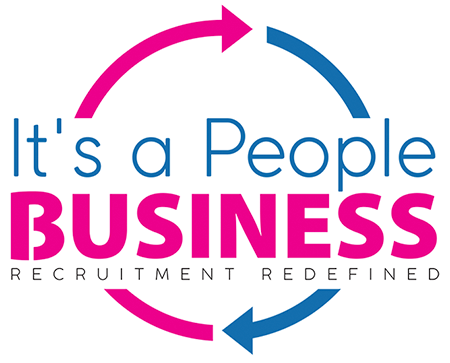
Employer branding is an essential part of any successful business. It is the practice of promoting and enhancing the reputation of a company and its offerings as an employer of choice. Effective employer branding campaigns can help attract and retain employees, improve customer loyalty, and boost a company’s overall reputation. In today’s digital age, it is becoming increasingly important for businesses to understand and utilise the power of employer branding to their advantage. This article will provide a blueprint to help maximise the potential of employer branding and ensure that your business is well-positioned to succeed. We will discuss the key components of successful employer branding, the reasons why it is important, and the strategies and tactics you can use to build an effective employer branding campaign. With the right approach, you can make sure that your company stands out from the competition and is well-positioned for long-term success.
1. Define your employer brand
1. Define your employer brand
The first step in maximising the potential of employer branding is to define your employer brand. This involves articulating the values, qualities, and culture of your organisation and how they differentiate you from competitors. It’s important to have a clear vision of what your employer brand is, and to ensure that it is communicated consistently across all media channels. Once this is established, you can then develop a strategic plan to ensure your employer brand is communicated effectively to potential job candidates.
Read More: The Benefits of Working with a Flat Fee Recruiter
2. Evaluate the existing employer brand
2. Evaluate the existing employer brand

Step two of maximising the potential of employer branding is to evaluate the existing employer brand. This includes understanding the current perception of the employer brand, as well as how it is being communicated to potential and current employees. Evaluating the existing employer brand will help identify any gaps or opportunities to better align it with the overall organisational objectives. It is important to consider the company’s values, culture and mission statement, as well as the current recruiting practices and HR strategy. Additionally, conducting market research and surveys can provide useful data to help evaluate the existing employer brand.
3. Set realistic and achievable goals
3. Set realistic and achievable goals

One of the most important steps for maximising the potential of employer branding is setting realistic and achievable goals. By setting realistic and achievable goals, you can ensure that your employer branding efforts are effective and that you are not setting yourself up for failure. You need to have clear long-term goals that are attainable, and you should also break them down into smaller, short-term goals. This will help you stay focused and motivated and will ensure that you are making steady progress towards achieving your long-term goals.
4. Foster a positive corporate culture
4. Foster a positive corporate culture
A positive corporate culture can be a powerful asset in creating a successful employer brand. It is essential to take the time to develop and maintain a healthy corporate culture that is based on respect, integrity, collaboration, and trust. This will help to foster an environment where employees feel valued and respected, and can perform to their fullest potential. In addition, a positive corporate culture will go a long way in creating a brand that is attractive to potential employees. Investing in employee health and wellbeing initiatives, such as flexible work hours, health and wellness programs, and mental health services, will help to create a culture that values and supports its employees.
Read More: Managing Staffing Challenges in the Modern Workplace
5. Build a strong digital presence
5. Build a strong digital presence

A strong digital presence is paramount to effective employer branding. In today’s digital world, it is essential to build a strong online presence by creating an effective employer website and by leveraging the power of social media. An effective website should include compelling content about the company culture, values, job openings, and other pertinent information. Additionally, employers should use social media to build a network of followers and engage in conversations about their brand. Employers should also consider creating a blog or vlog to provide further insight into their company. By leveraging the power of digital platforms, employers can effectively showcase their employer brand and maximise the potential of their employer brand.
6. Utilise employee advocacy
6. Utilise employee advocacy
Employee advocacy is an incredibly powerful tool for building a strong employer brand. It can be used to raise awareness of the company, its products, and services, and to promote its mission, values, and culture. Encourage employees to share positive stories, experiences, and accomplishments with their networks on social media and other digital channels. They can help to get your message out and reach a wider audience that may otherwise be difficult to target. Additionally, employee advocacy can help to create a sense of unity, pride, and team spirit amongst employees and demonstrate to potential candidates that your organisation values its people.
Read More: Navigating the UK Job Market: Insights and Strategies
7. Encourage feedback and review
7. Encourage feedback and review
Encouraging feedback and reviews is a key part of maximising employer branding. Positive customer reviews create social proof and trust, and can be a powerful tool to boost your employer brand. Reviews also provide valuable insights into the customer experience, helping to identify areas of improvement and enable employers to take a proactive approach to addressing customer needs. This can be done through surveys, customer feedback forms, or even via social media. Encouraging feedback and review is an important part of creating a great customer experience, and employer branding should always be mindful of the customer journey.
8. Monitor and adjust accordingly
8. Monitor and adjust accordingly

Once you have implemented your employer branding strategy, it is essential that you monitor the success of your efforts. You should track key metrics such as the number of applications or the time taken to fill vacant positions, as well as qualitative metrics such as employee engagement and brand awareness. This will allow you to adjust your strategy if it is not performing as expected. Make sure to be proactive and explore alternative tactics if your current approach is not producing the desired results. By monitoring and adjusting accordingly, you can ensure the continued success of your employer branding.
In conclusion, employer branding is an essential tool for any organisation that wants to attract and retain top talent. By investing in employer branding and creating a compelling employer brand story, organisations can increase their appeal to potential and current employees. Employer branding should be an integral part of any organisation's HR strategy and, when done right, can help to build a strong and successful organisation.
